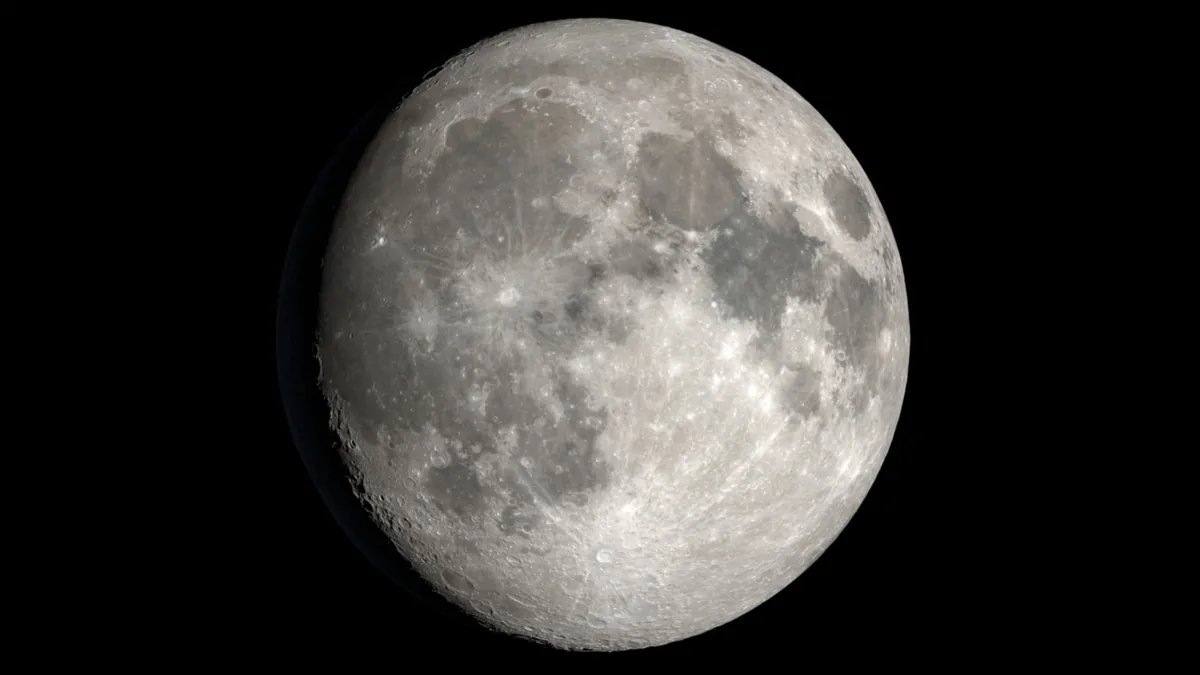
International Observe the Moon Night 2025 is fast approaching! On October 4, 2025, the lunar disk will rise majestically above the eastern horizon, marking a significant occasion for astronomy enthusiasts and casual observers alike. Each year, NASA collaborates with a variety of international partners to host events that encourage the public to engage in observing the moon and to learn more about humanity's historic efforts to explore Earth's natural satellite. To fully enjoy this celestial event, be sure to visit the Observe the Moon Night website, where you can find over 950 virtual and in-person events designed to celebrate this astronomical phenomenon!
In honor of Observe the Moon Night 2025, we have curated a list of five stunning lunar targets that you can explore through a telescope, binoculars, or even with the naked eye. These targets showcase the diverse and fascinating features of the lunar surface, making them perfect for both novice and experienced astronomers.
The line that separates night from day on the lunar surface is known as the terminator. On October 4, this shadowy divide will cast over the extreme left side of the 95%-lit moon, just two days before it reaches its full moon phase on October 6. This full moon will give rise to a spectacular Harvest Supermoon. As you observe the terminator, look to the top to see the shadow-drenched form of the 75-mile-wide (120-kilometer) Pythagoras Crater, scarred into the lunar surface. To the south, the western rim of the expansive Schickard Crater comes into relief, set against the striking oval form of the impact crater Byrgius.
Direct your gaze south of the moon's equator on October 4 to discover Mare Nubium, which translates to the "Sea of Clouds." This dark expanse covers a significant portion of the lunar surface, highlighted by the prominent Lubiniezky, Bullialdus, and Wolf craters that punctuate this basalt plain. The lunar seas were formed billions of years ago when molten lava flooded networks of impact basins created by brutal asteroid strikes. As the lava cooled and solidified, it repaved the lunar surface, creating vast regions that appear relatively unscathed compared to the more ancient parts of the moon.
The Montes Jura mountain range is a vast terrain bordering the northern edge of the Sinus Iridum, or Bay of Rainbows. These upper peaks are perfectly positioned to catch sunlight approximately 11 days after the monthly new moon phase. This celestial alignment creates the illusion of a vast Golden Handle resting upon the lunar surface, making it a captivating sight for observers on October 4.
The nights surrounding a full moon phase provide an excellent opportunity to spot ejecta rays illuminating the lunar surface. These bright streaks, which emanate from craters, are formed when asteroid strikes eject reflective material from the moon's interior. Ejecta rays can extend for hundreds of kilometers, and on this special night, look for them radiating away from large impact sites such as Kepler, Copernicus, and the 53-mile-wide (85-km) Tycho Crater, which dominates the southern lunar surface. While all impact craters once exhibited ejecta rays, prolonged exposure to the space environment has dulled many of these features. The ones visible today are relatively young, with Tycho, for instance, being just 108 million years old.
As you prepare for International Observe the Moon Night 2025, take the time to explore these fascinating lunar targets. Whether you’re observing through a high-powered telescope or simply enjoying the view with the naked eye, this is an excellent opportunity to connect with the wonders of our natural satellite and the universe beyond!